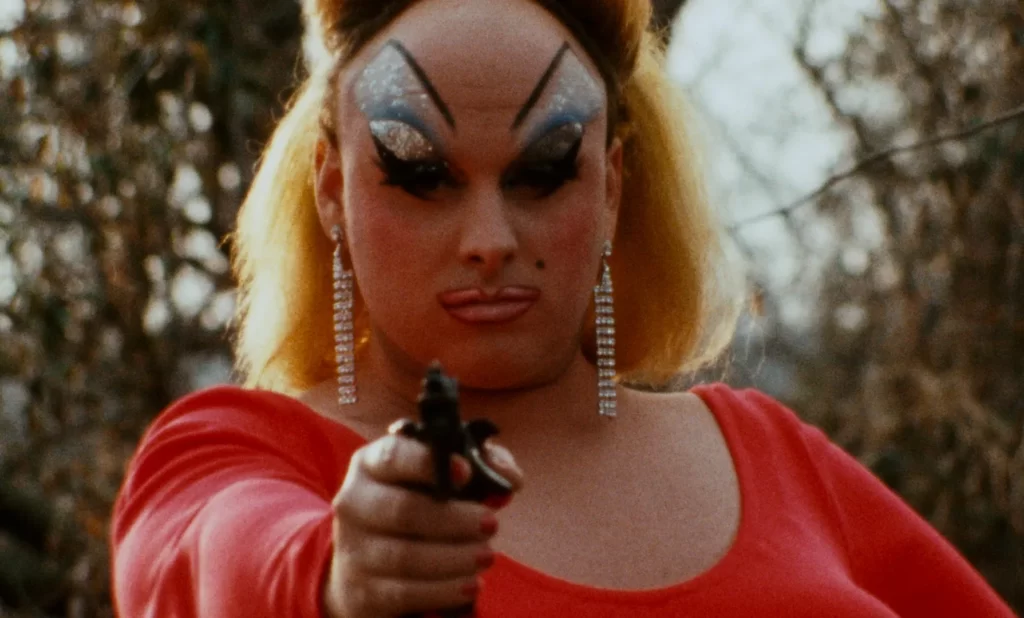“Without obsession, life is nothing.” – John Waters
When I was a kid, my parents took me to Hairspray on Broadway. I asked why a man was playing Mrs. Turnblad, and they explained that the choice to do so is in honor of a man named Divine. Divine has not left my consciousness since, and I can safely say, I have become more and more obsessed with him throughout my adulthood.
Queer Culture and Horror: The Roots of My Obsession
My obsession stems from two factors: queer culture and horror films. Both culminate spectacularly during Halloween as flamboyant and outrageous costumes fill West Hollywood, San Francisco, and Greenwich Village. The birth of Divine by Harris Glenn Milstead and his makeup artist Van Smith is intrinsically linked to Halloween costume pageantry. In 1963, Milstead and his then-girlfriend Diana Evans were getting ready to attend a Halloween costume part. Milstead, with a push by his drag mentor and future fellow Dreamlander David Lochary, presented himself as a stunning Elizabeth Taylor. Milstead, the drag queen and actor, made her debut.
Divine would go on to subvert the expectations of drag. While others treated drag balls as pageants and expressions of traditional femininity, Milstead flipped the script and used his size to his advantage. Being bigger while wearing skimpy outfits made him stand out amongst the more conventional contestants. He stole the show.
Divine and John Waters: A Dreamland Legacy
Milstead would soon be dubbed “Divine” by friend and filmmaker John Waters as part of Waters’ Dreamlanders, a group of misfits, queers, and artists who acted in his low-budget films (Dreamland Productions), which were antagonistic toward the hippie subculture, its cliches, and traditional ideals of beauty. Never shy from controversy or bad taste, Waters’ films are in-your-face rebuttals to popular culture and traditional American values. Divine was possibly the very first person to portray Jackie Kennedy on film in Waters’ short film Eat Your Makeup (1968), which included a re-creation of the JFK assassination, another first on film, complete with a blood-soaked ensemble.
Following his full-length feature film debut in Mondo Trasho (1969), Divine revs up the larger-than-life Divine persona as the monstrous Lady Divine in Multiple Maniacs (1970). Divine’s character “turns” lesbian after a sexual encounter with a woman in a church involving anally inserted rosary beads; goes on a murderous rampage; is raped by a giant lobster; roams the streets of Baltimore, foaming at the mouth, growling; and is gunned down by the National Guard to the tune of America, the Beautiful. “I wanted him to be the Godzilla of drag queens,” asserts Waters in My Son Divine (2001). “I mean, at the end of Multiple Maniacs, the National Guard shoots him. How much closer to Godzilla can you be?”
Iconic Role: Babs Johnson in Pink Flamingos
What became Divine’s career-making role was the filthiest person alive, Babs Johnson in Pink Flamingoes (1972). Aside from the groundbreaking and revolting final scene in which Divine eats fresh dog shit, one cannot forget Divine’s skin-tight, blazing red lobster tail dress, eyebrows dramatically drawn well beyond an acceptable hairline (an idea conceived by Van Smith), aiming a gun at the antagonistic Marble couple, and decreeing their conviction of “assholeism.” The ensemble and make-up conjured by Smith and Waters would inspire punk for decades to come: a mix of terror, rebellion, and femininity. These themes would follow throughout Divine’s work with Waters, especially Female Trouble (1974), where body horror was on full display after an acid attack had left Dawn Davenport (Divine) severely and outrageously scarred.
Divine’s Disco Era: Music and Stardom
After his successes in Waters’ movies, Divine went on to perform as a disco/dance musical act with several singles such as “Born to Be Cheap” (1981) and “I’m So Beautiful” (1984). He had solidified himself as a headlining drag performer and socialite among the stars. Divine made head-turning appearances at queer functions and famous discotheques such as Studio 54 with the likes of Andy Warhol, Elton John, and Grace Jones. During this time, Divine hosted multiple Halloween events, including a Divine look-a-like contest billed as “A Divine Halloween” at the Plush Room Cabaret in San Francisco (1980).
Divine’s Halloween Legacy: The Bride of San Francisco
In 1982, Divine was again the main attraction of the Halloween party at the I Beam on Haight Street in San Francisco, the city’s first large dancing and music venue. The event poster proclaims that Divine is in search of his groom, with a $200 award for first place in the costume contest. The Bride returned at a Halloween party at the Giftcenter Pavilion in San Francisco three years later. For the Special Costume Category, “The lovely bride DIVINE will choose her groom in Dr. Frankenstein’s laboratory. The lucky groom will receive $500 and DIVINE.” The Bay Area Reporter advertised the event, asking readers to help Divine find a husband.
If you are reading this and were the lucky winner of Divine’s hand in marriage, please contact me immediately.
Divine’s Enduring Impact on Queer Culture
A mix of queer drag culture, particularly the subversion of traditional drag from the 1960s, and cult films defined Divine’s career. As a midnight movie Godzilla, nightclub act, recording artist, and costume ball headliner/Bride, Divine has reigned supreme as one of the most recognized figures in queer culture and frequently celebrated mad woman of camp and Halloween. Harris Glenn Milstead’s grotesque elegance of Divine, born from a Halloween party, has captivated audiences for decades, including me. I cannot escape him, nor do I ever want to escape. Without divinity, my life is nothing.
